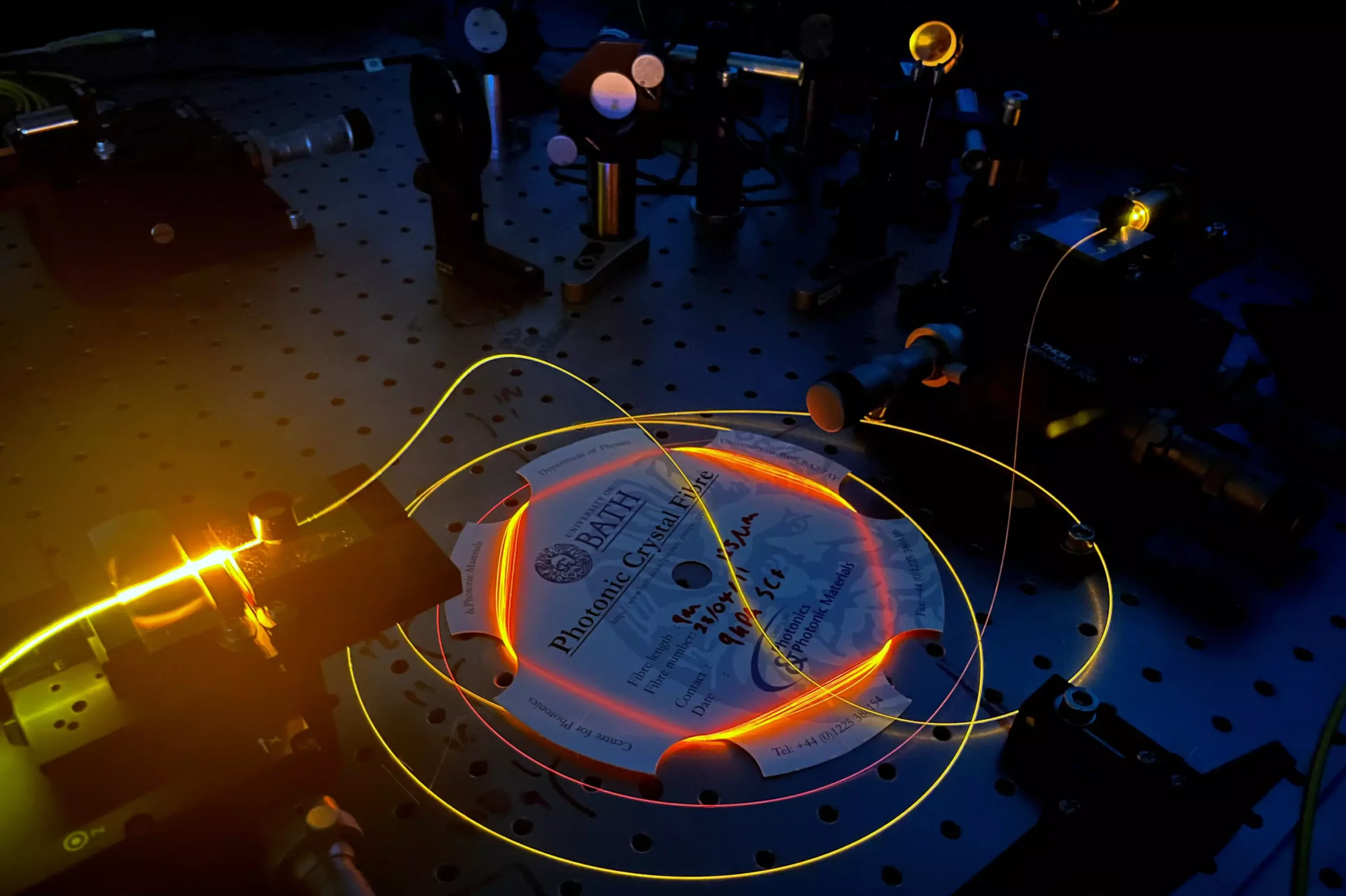The dawn of quantum computing heralds a remarkable era in technological advancement, promising solutions to complex issues in medicine, cryptography, and logical problem-solving. However, as we stand on the cusp of this quantum revolution, the infrastructures supporting our modern communication systems must evolve to meet new demands. Researchers at the University of Bath in the UK are pioneering a new generation of specialty optical fibers designed to address the unique obstacles posed by quantum technologies, setting the stage for a profoundly different information transfer system.
Incompatibility of Traditional Fibers
Traditional optical fibers have served as the backbone of global telecommunications for decades. However, as quantum capacities unfold, these fibers exhibit significant limitations. Conventional fibers, with their solid silica cores, transmit light in a manner that is not aligned with the operational wavelengths essential for quantum technologies, including single-photon sources and qubit operations. Dr. Kristina Rusimova, a physicist at Bath, articulates this critical dissonance, emphasizing how existing technologies simply cannot support the intricacies of quantum information transfer. This highlights the urgent need for innovation—an understanding that underpins the University of Bath’s groundbreaking work.
The Innovation of Micro-Structured Fibers
In response to the challenges posed by the quantum landscape, the Bath researchers have developed micro-structured optical fibers with unique complex patterns of air pockets running its length. This innovative structure allows for unparalleled control over the properties of light it transmits. The ability to manipulate light within these fibers opens up avenues for generating entangled photon pairs, essential for quantum communication and computational tasks.
Dr. Cameron McGarry, involved in the research and the first author of a significant academic paper on the subject, highlights the necessity of developing a quantum internet predicated on these fibers. This quantum infrastructure promises to relay information securely and efficiently across vast distances, akin to how our current internet functions but fueled by the principles of quantum mechanics.
Advancing the Quantum Internet Framework
The researchers under discussion have framed the quantum internet as an essential evolution, much like the transition from classical communication networks to the current internet framework. However, creating this new network demands optical fibers far different from those used today. Not only must these specialty fibers support long-distance communications but they also need to cater to the requirements of quantum repeaters, which extend the operational range of quantum technology.
The team delves into the holistic approach needed to build a scalable and robust quantum network. Their research presents strategies rooted in optical fiber technology that can address the hurdles faced in establishing reliable quantum communications, paving the way for innovations in how information is relayed and processed.
Multi-functional Specialty Fibers
Beyond simply acting as conduits for quantum data, the newly developed specialty fibers have the potential to function as quantum computation nodes themselves. These fibers can generate entangled photons, serve as quantum wavelength converters, and act as low-loss switches or vessels for quantum memories, effectively layering complexities and capabilities beyond simple data transmission. This multifaceted approach stands to revolutionize not only telecommunications but also how we conceive quantum computations at large.
Dr. Kerrianne Harrington, a postdoctoral researcher at Bath, underscores the exciting perspectives these innovations create in both the scientific and industrial realms, emphasizing the implications for future technological advancements beyond conventional optics.
The Promise of Quantum Advantage
While the notion of quantum advantage—the ability of quantum systems to outperform conventional systems—remains unproven in practice, the trajectory mapped out by Bath’s research signals great promise. The technological hurdles identified by this team can open new research avenues and hasten our journey toward realizing quantum advantages. Their pioneering work in specialty optical fibers is not just an academic exercise; it holds tangible possibilities for transformative impacts across scientific disciplines.
The endeavor spearheaded by the researchers at Bath, including Dr. Peter Mosely, encapsulates a critical moment in technological advancement—a moment where the convergence of quantum mechanics and optical technology can fundamentally alter how we communicate, protect information, and unleash computational power. As we stand on the brink of this new frontier, the implications are both profound and inspiring, cementing the University of Bath’s position at the forefront of this emergent field.

